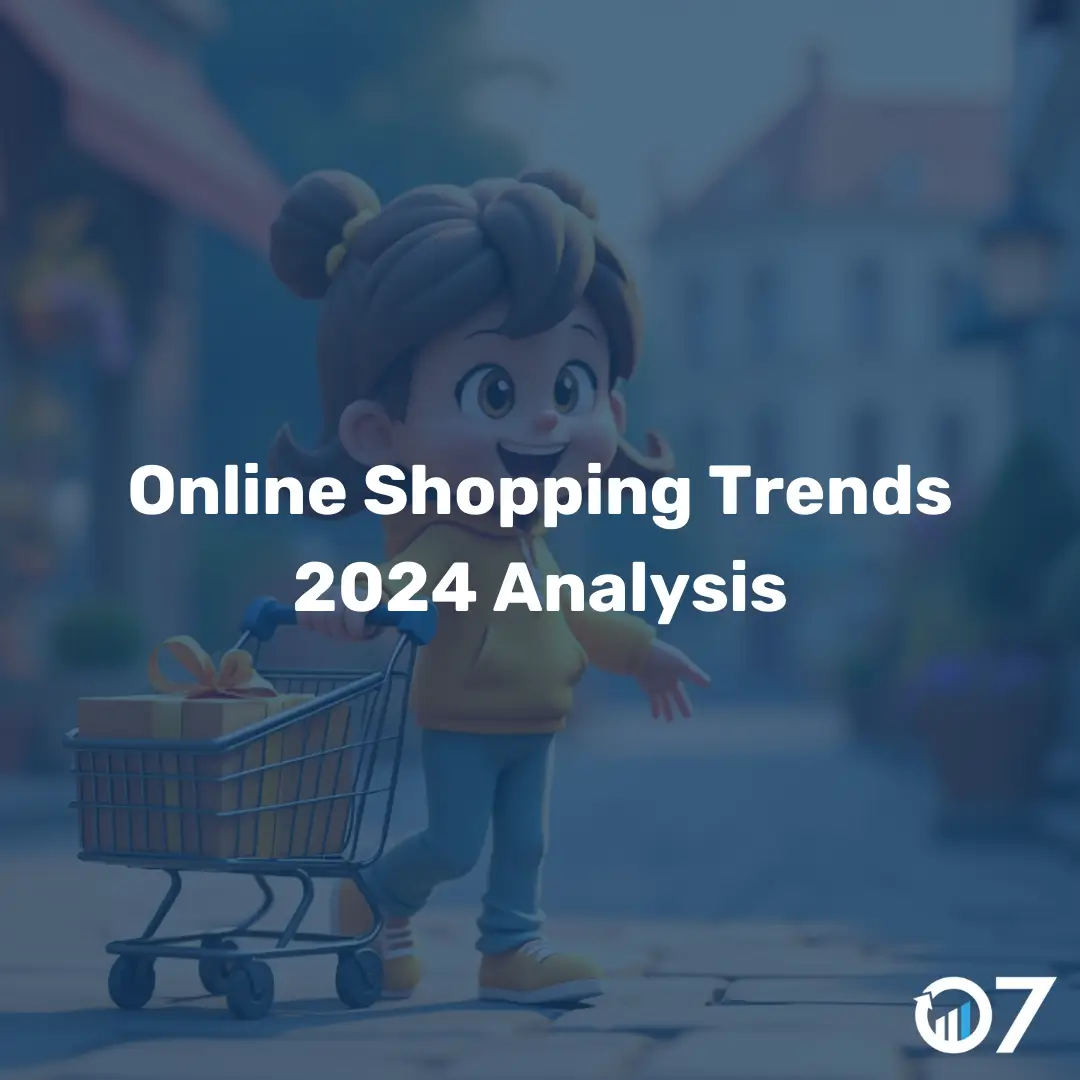Shopping trends have drastically evolved over the past few years. For businesses, understanding these changes is critical for staying competitive in the market. Let’s dive into the Online Shopping Trends 2024 Analysis and uncover key insights.
How Online Shopping Trends Changed in 2024
Consumers Prefer Flexibility Over Subscription Models
Today’s consumers enjoy a great deal of flexibility in their purchasing options. They can make one-time purchases, join subscription services, or even choose installment payments through platforms like Afterpay and Klarna. However, despite these flexible options, a significant 63% of consumers still prefer purchasing products as needed, rather than committing to subscriptions. Only 17% favour subscription-based purchasing.
Erica Santiago, a HubSpot staff writer, notes, “I’ve seen a few ‘grocery subscription’ services pop up over the last year or two. Basically, you sign on to get a certain item on a monthly basis. But I prefer getting items as I need them because I don’t like getting roped into a commitment.”
She further explains, “Let’s say I typically order a lot of fruits and veggies, so I subscribe to a service that delivers my usual quantity each month. However, if I’m out of town a lot during the summer, I might not have time to eat all the produce. Or, I have to remember to pause the subscription while away.”
Santiago finds subscriptions a hassle to manage and not always a cost-saving guarantee. She adds, “I have too many subscriptions as it is, and I’m always getting emails about price increases. It can be a pain to remember what to cancel. I’d rather just buy things as I need them.”
Moreover, consumers prefer to purchase products at full price. Only 21% opt for installment payments. Santiago explains, “An installment is like another monthly payment I need to remember along with my other payments. I’d rather buy something once, pay it in full, and not worry about it until I need it again.”
Baby Boomers Are Skeptical About Shopping via Social Media, But They’re Coming Around
According to our report, only 8% of Baby Boomers feel comfortable making purchases directly on social media. However, this trend is shifting. Twenty percent of Baby Boomers have discovered a new product on social media in the past three months—a 41% increase from May 2022. Additionally, 8% of Boomers have bought a product on social media in the past three months, a more than 50% jump from May 2022.
While these stats are promising, it’s essential to meet your consumers where they are right now. If your audience skews older, you might gain more traction with other channels like TV ads and search.
A Company’s Stance on Social Issues Remains Important to Millennials and Gen Z’ers, But Quality Reigns Supreme
Consumers want to support companies that share their values. For example, 64% of consumers want companies to reduce their environmental impact. However, this isn’t as big a deciding factor as it used to be. For instance, 58% of consumers believe companies should donate a portion of their profits to charity, a 3% decrease from 2023. Meanwhile, 76% think companies should try to improve employee well-being, up only 1% from May 2022.
When a company takes a genuine stand, it can build trust and credibility. However, consumers care most about the quality of a product or service and whether it’s worth their money. Our study found that 51% of consumers say quality and price are the most important factors in their purchasing decisions. One of the top concerns consumers have with buying items online is the quality.
The Top Online Shopping Trends of 2024
Influencer Recommendations Matter More Than Recommendations from Friends and Family for Gen Z
Our survey reveals that over a fifth of Gen Z consumers (22%) prefer discovering new products on social media via influencers. For millennials, this number is 29%. Furthermore, 27% of Gen Z consumers have made a purchase based on an influencer’s recommendation in the last three months, and 36% of millennials say the same.
Influencer marketing has remained effective, which is why 50% of marketers plan to increase their investment in it in 2024. However, there’s a slight shift among Gen Z consumers. Only 9% say recommendations from friends and family are among the most important factors in their purchasing decisions, just 2% less than those who value influencer recommendations.
Most millennials and Gen Zers still trust influencers and consider their recommendations in their purchasing decisions. This makes sense, as influencers are traditionally considered experts in their niche. For e-commerce businesses, this is powerful news: it means you no longer need to rely solely on word-of-mouth. Instead, focus on influencer marketing since influencers have a significant impact on their audiences.
Gen Zers Prefer to Discover New Products via Social Media But Still Like to Make Purchases In-Store
Our State of Consumer Trends Survey found that 40% of Gen Zers (ages 18-24) have discovered new products on social media in the last three months. Internet searches (28%) and word of mouth (26%) follow closely. For e-commerce businesses targeting Gen Zers, it’s vital to focus on social media for attracting new leads and educating them about your products.
When asked which content formats Gen Zers prefer for learning about a product and its features on social media, 48% said they prefer short-form videos like TikToks or Reels. However, 38% still prefer to purchase products in-store. This highlights the importance of having a strong, effective in-store shopping option for those who prefer to make the final sale in person.
Social Media is the Most Popular Option for Discovering New Products Among Millennials and Gen X
Similar to Gen Zers, social media is the most popular method for millennials (34%) and Gen X (28%) to discover new products. YouTube ads (29%) are a close second for millennials. If you’re targeting a millennial demographic, consider investing in YouTube and YouTube Ads to get their attention.
For Gen X (35-54-year-olds), social media is also the most popular option. Additionally, 27% of Gen X buyers search the internet for new products, making SEO another good option.
Millennials, Gen Xers, and Gen Zers Prefer to Discover New Products via Short-Form Videos
What do Gen Zers, millennials, and Gen Xers have in common? The majority of them (48%, 47%, and 36%, respectively) prefer discovering new products via short-form videos. To attract these generations, consider using short-form videos like TikTok or Instagram Reels.
Mobile Phones Are the Most Popular Device for Online Shopping, But Most Consumers Prefer Buying In-Store
The majority of consumers in our survey (62%) prefer shopping online with their mobile phone over using a tablet, computer, or laptop. Surprisingly, 64% actually prefer purchasing items in-store.
“I find new products online all the time, and I’ll even do some ‘virtual window shopping,” says HubSpot’s Santiago. “But I prefer purchasing items in-store to get a feel for the quality or try on clothes.”
Ensure that your in-store experience is as delightful, easy, and effective as your digital store. If you’re an e-commerce business, it’s critical that your website is mobile-optimized, and you have mobile-responsive product pages. If a website is too difficult to navigate on a phone, consumers are likely to abandon it.
Price and Quality Matter Most When Making a Purchasing Decision
Most of our Gen Z (40%) and Boomer respondents (71%) say price is the most important factor when deciding to buy a product. However, quality is actually the top factor for Millennials (33%) and Gen Xers (46%). No matter the order, price and quality are the top two deciding factors. Ensure your products are fairly priced and of high quality.
Short-Form Video Offers Huge Advertising Opportunities
Short-form video is the most popular video length on social media. As a result, TikTok and other short-form video platforms are becoming viable advertising channels. In fact, 37% of consumers in our survey want to learn about products through short-form videos like TikToks or Reels. Additionally, 52% of U.S TikTok users say the advertisements they see on the platform are fun and engaging.
The Online Shopping Trends to Expect in 2025
Omnichannel Retailing Will Be a Priority
Our survey results show that mobile, online, and in-store shopping are all important to consumers across generations. Expect businesses to lean heavily into omnichannel retailing. This means ensuring the shopping experience is consistent, connected, and delightful no matter how or where customers are shopping.
Sustainable and Ethical Practices Will Be Crucial in Retaining Consumer Trust
Consumers care a lot about a company’s values and ethics. For example, 64% of consumers agree that companies should try to reduce their environmental impact. Think of ways your company can operate sustainably and ethically for both the planet and your consumers.
Prepare to See a Lot of Micro and Nano-Influencers in Short-Form Video Advertisements
Short-form video is still a preferred medium for many consumers learning about new products. Marketers continue to see success with micro and nano-influencers. Expect to see more influencers promoting products and services on short-form video platforms like Instagram Reels, YouTube Shorts, and TikTok.
When creating an effective e-commerce strategy, it’s vital to understand how shoppers want to shop today and into the future. Shopping behaviours change over time. The more your business can meet the evolving needs of your consumers, the more likely you are to continue to succeed well into the future.
For further insights and updates on online shopping trends, visit our blog or contact us via email at info@07hm.co.uk or telephone 01702 410663.





